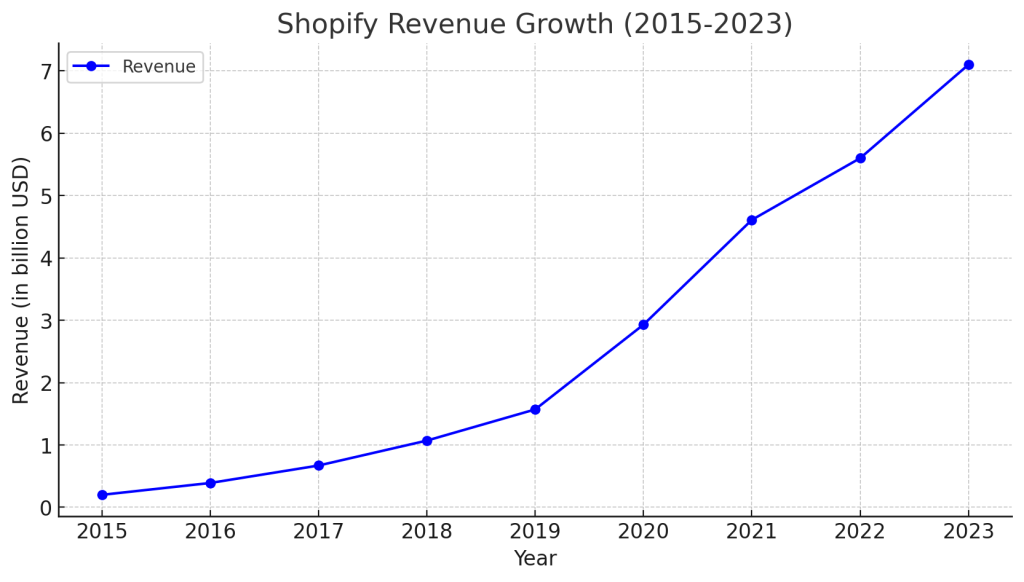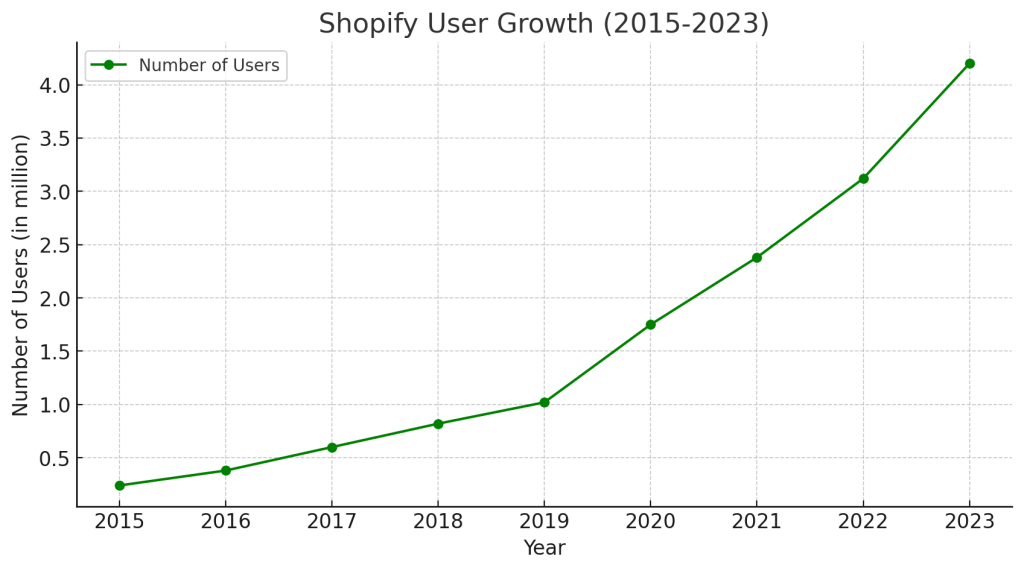Last Updated on August 13, 2024 by Vlad

Tobias Lütke’s journey to wealth is a tale of innovation and entrepreneurship. The German-Canadian tech tycoon co-founded Shopify, an e-commerce platform that has revolutionised online retail. Lütke’s net worth reached US$6.9 billion as of April 2024, making him one of Canada’s wealthiest individuals.
Lütke’s path to riches began with his passion for coding. He started writing code at age 11 and later dropped out of school to pursue a career in technology. This decision led him to create Shopify, which has grown into Canada’s largest listed company. The company’s success on the stock market since its 2015 IPO has been a major factor in Lütke’s wealth accumulation.
Key Takeaways
- Lütke co-founded Shopify, an e-commerce platform that fueled his wealth.
- His early passion for coding led to innovative tech solutions in online retail.
- Shopify’s stock market success significantly boosted Lütke’s net worth.
Early Life and Education of Tobias Lütke
Tobias Lütke, often called Tobi, was born in 1981 in Koblenz, Germany. He showed an early interest in computers and coding. At age 11, Tobi started writing code on his Schneider computer. This early passion for programming set the stage for his future success.
At 16, Tobi decided to leave school. Instead of continuing traditional studies, he chose a more hands-on approach to learning. He secured an apprenticeship with Siemens, a major technology company. This experience gave him practical skills in the tech industry. During his apprenticeship, Tobi worked under Jürgen Starr, from whom he learned valuable lessons.
Entry into the Tech Industry
Tobias Lütke’s journey into the tech world began with a passion for coding and snowboarding. These interests converged to spark his entrepreneurial spirit and set him on the path to creating Shopify.
The Founding of Snowdevil
In 2004, Lütke co-founded Snowdevil, an online shop selling snowboarding equipment. He faced challenges with existing e-commerce platforms, finding them inadequate for his needs. This frustration led him to develop his own solution. Lütke, a skilled programmer, used his coding expertise to build a custom e-commerce platform for Snowdevil. The platform caught the attention of other small business owners who saw its potential.
Transition to Shopify
Recognising the broader appeal of his e-commerce solution, Lütke shifted focus from Snowdevil to developing a platform that any business could use. This led to the birth of Shopify in 2006. Lütke and his team worked to refine the platform, making it more versatile and accessible to a wide range of businesses. Shopify’s user-friendly interface and robust features quickly gained traction, empowering small-town stores to become global players.
Shopify’s Growth and Success
Shopify’s trajectory from a small startup to a global e-commerce giant is marked by strategic decisions and innovative solutions. The company’s success stems from its public offering, clever market expansion, and cutting-edge technological advancements, which also explains just how did Tobias Lütke get rich.
Going Public
Shopify went public in May 2015, listing on the New York and Toronto stock exchanges. This move raised $131 million and valued the company at $1.27 billion. The initial public offering (IPO) provided Shopify with capital to fuel its growth plans. The company’s stock price soared in the years following the IPO, reflecting investor confidence in Shopify’s business model and growth potential.
Market Expansion Strategies
Shopify’s growth strategy focused on expanding its merchant base globally. The company targeted small and medium-sized businesses, offering them tools to create online stores quickly and easily. Partnerships played a key role in Shopify’s expansion. The company teamed up with social media platforms like Facebook and Instagram to enable social commerce. Shopify also expanded its services to include offline retail solutions, catering to brick-and-mortar stores.
Shopify Revenue Growth (2015-2023)

Shopify User Growth (2015-2023)

Shopify’s Innovations
Shopify has consistently introduced cutting-edge technologies and features to revolutionise e-commerce. Here are some of the key innovations that have driven its success:
Shopify Payments
Shopify Payments is an integrated payment solution that simplifies the checkout process for merchants and customers. By offering a seamless and secure way to process transactions directly within the Shopify platform, merchants can avoid the complexities of third-party payment gateways. This integration reduces transaction fees and improves the overall user experience.
Shopify Fulfillment Network
The Shopify Fulfillment Network (SFN) is a distributed network of fulfillment centers that helps merchants manage their inventory and shipping. The service is modelled along the lines of Jeff Bezos FBA. SFN offers two-day delivery across the U.S. and enables businesses to compete with major retailers in terms of shipping speed and reliability. This service includes inventory management, order tracking, and returns processing, making it easier for merchants to scale their operations.
Shopify POS
Shopify’s Point of Sale (POS) system allows merchants to integrate their online and offline sales. This system provides a seamless experience for customers and helps merchants manage inventory, sales, and customer data across multiple channels. Shopify POS supports various payment methods, including contactless payments, and offers features like staff management and in-depth analytics.
Shopify Plus
Shopify Plus is an enterprise-level e-commerce platform designed for high-volume merchants and large businesses. It offers advanced features, greater customisation, and dedicated support to meet the needs of large-scale operations. Shopify Plus includes automation tools, personalised checkout experiences, and robust analytics to help enterprises optimise their e-commerce strategies.
Shopify Capital
Shopify Capital provides funding to merchants to help them grow their businesses. By using sales data and predictive algorithms, Shopify identifies eligible merchants and offers them financial support without the need for lengthy application processes. This funding can be used for inventory, marketing, or other business expenses, and repayments are made through a percentage of daily sales.
Shopify App Store
The Shopify App Store offers a wide range of third-party apps and integrations to extend the functionality of the Shopify platform. Merchants can find tools for marketing, sales, customer service, accounting, and more. This ecosystem allows businesses to tailor their e-commerce operations to their specific needs and enhances the flexibility of the Shopify platform.
Shopify AR
Shopify has embraced augmented reality (AR) to enhance the shopping experience. By allowing merchants to create 3D models of their products, customers can visualise items in their own space before making a purchase. This innovation increases customer engagement and reduces return rates by providing a more accurate representation of products.
Shopify Flow
Shopify Flow is an automation platform that enables merchants to automate repetitive tasks and workflows. By creating custom automation rules, businesses can streamline operations, improve efficiency, and reduce manual effort. Flow integrates with other Shopify apps and services, allowing for comprehensive process automation.
Shopify Scripts
Shopify Scripts allow merchants to create customisations for their online stores using a simple scripting language. This feature is particularly useful for creating personalised discount codes, dynamic pricing, and custom checkout experiences. By offering this level of customisation, Shopify helps merchants deliver unique and engaging shopping experiences.
Impact of Innovations
These innovations have collectively contributed to Shopify’s success by:
- Enhancing User Experience: By simplifying processes and integrating essential tools, Shopify makes it easy for merchants to manage their businesses and for customers to shop.
- Supporting Growth: Innovations like Shopify Capital and the Fulfillment Network help businesses scale and compete with larger retailers.
- Increasing Flexibility: The App Store and customisation options allow merchants to tailor their stores to their unique needs.
- Driving Engagement: Features like Shopify AR and personalised checkout experiences improve customer engagement and satisfaction.
Shopify’s commitment to innovation ensures that it remains at the forefront of the e-commerce industry, continually adapting to meet the evolving needs of merchants and consumers.
Challenges and Setbacks
Building Shopify wasn’t without its challenges. Lütke and his team faced significant technical hurdles in the early stages, such as developing a scalable platform that could handle a growing number of merchants. Additionally, the competitive landscape of e-commerce required constant innovation to stay ahead.
One notable challenge was during Shopify’s IPO process, where they had to navigate market skepticism and prove their business model’s viability. Lütke’s perseverance and strategic thinking were crucial in overcoming these obstacles and driving the company’s success.
Entrepreneurial Leadership
Tobias Lütke’s approach to leadership shaped Shopify’s success. His unique philosophy and focus on company culture drove the e-commerce giant’s growth.
Business Philosophy
Lütke’s business philosophy centers on long-term thinking and innovation. He believes in creating value for small businesses by empowering them with e-commerce tools. Lütke champions a problem-solving mindset, encouraging his team to tackle big challenges. He values learning and adapts quickly to changes in technology and market demands. This approach has helped Shopify stay ahead in the fast-paced e-commerce industry.
Company Culture and Values
Shopify’s culture reflects Lütke’s leadership style. He fosters an environment of trust and autonomy, giving employees freedom to innovate. The company values transparency and open communication. Lütke regularly shares insights with his team, keeping everyone aligned with the company’s vision. Shopify promotes a growth mindset among its staff, encouraging continuous learning and personal development. The company also prioritises diversity and inclusion, believing that diverse perspectives drive better solutions and innovation. Shopify’s culture emphasises work-life balance, offering flexible work arrangements and focusing on employee well-being.
Wealth Accumulation
Tobias Lütke’s wealth grew through his ownership of Shopify shares and his compensation as CEO. His net worth skyrocketed as Shopify’s stock price rose dramatically over the years.
Stock Ownership and Value
Lütke’s main source of wealth comes from his Shopify shares. He owns about 6% of the company, which he co-founded in 2006. Shopify went public in 2015, and its stock price has increased significantly since then. As Shopify’s value grew, so did Lütke’s net worth. In 2021, his Shopify shares were worth more than $12 billion, making him the third-wealthiest Canadian individual on Bloomberg’s Billionaires Index at the time.
Current Net Worth
Tobias Lütke’s net worth, as of August 2024, is estimated at some $6.3 billion by Forbes, which is a considerable drop from the peak of his wealth back in 2021.
Compensation and Bonuses
Interestingly, Lütke draws a salary of just $1 as Shopify’s CEO. This approach is not uncommon among tech executives who hold significant company shares. Despite the low base salary, Lütke likely receives other forms of compensation, including stock options, performance bonuses, and other benefits typical for high-level executives. Shopify’s success has led to impressive revenue growth. In 2020, the company reported revenue of US$2.9 billion, an 86% increase from 2019. This growth likely contributed to Lütke’s overall compensation package.
Investments and Other Ventures
Tobias Lütke has expanded his financial portfolio beyond Shopify. He’s made strategic investments in startups and participated in venture capital initiatives.
Angel Investing
Lütke has backed several promising startups as an angel investor. He invested in Ethereum early on, showing his interest in blockchain technology. This move proved lucrative as Ethereum’s value soared. He’s also supported other tech companies, focusing on those with innovative solutions. His investments often align with his expertise in e-commerce and software development. Lütke’s approach to angel investing is hands-on. He often provides mentorship and guidance to the founders he backs, sharing his experience as a successful entrepreneur.
Venture Capital Initiatives
Beyond individual investments, Lütke has been involved in broader venture capital efforts. He’s participated in funding rounds for various startups, particularly those in the tech sector. Lütke has shown interest in companies that align with Shopify’s ecosystem, helping create synergies between his investments and Shopify’s growth. He’s also been part of initiatives to support Canadian tech startups, demonstrating his commitment to fostering innovation in his adopted home country. Lütke’s venture capital activities often focus on early-stage companies, leveraging his network and experience to help these startups scale and succeed.
Future Plans and Vision
Looking ahead, Lütke envisions Shopify continuing to lead the e-commerce revolution by integrating more advanced technologies like AI and AR. He is committed to expanding Shopify’s global reach and empowering more small and medium-sized businesses to thrive online.
Lütke is also focused on sustainability and ethical business practices, aiming to reduce the environmental impact of e-commerce through initiatives like the Shopify Sustainability Fund.
Philanthropy and Personal Interests
Tobias Lütke has shown a keen interest in supporting education and technology initiatives. He has made significant donations to coding education programs for youth. Lütke is passionate about environmental causes and has backed projects focused on sustainability and reducing carbon emissions in the tech industry.
Outside of work, Lütke is an avid snowboarder and coder. These hobbies have influenced his approach to business and innovation. He has a deep fascination with video games, believing that gaming can positively impact young minds, fostering problem-solving skills and creativity.
The Shopify CEO is known for his modern leadership style. He encourages a culture of continuous learning and personal growth within his company and beyond. Lütke’s philanthropic efforts often align with his business interests, supporting initiatives that promote entrepreneurship and help small businesses thrive in the digital economy. Despite his wealth, Lütke maintains a relatively low profile, preferring to focus on his work and family rather than living a lavish lifestyle.
Quotes and Testimonials
“Tobi’s ability to see the big picture and his relentless focus on customer success have been instrumental in Shopify’s growth,” says Harley Finkelstein, Shopify’s President. “His leadership and vision continue to inspire everyone at Shopify.”
In an interview, Lütke once said, “The most important thing for any entrepreneur is to solve a real problem. If you focus on making life easier for your customers, success will follow.”
Lessons we can learn from Tobias
From Tobias Lütke’s journey and leadership, we can learn several valuable lessons:
Passion and Persistence
- Follow Your Passion: Lütke’s early interest in coding led him to develop skills that would later become the foundation of his success. Pursuing what you love can drive innovation and fulfillment.
- Stay Persistent: Lütke faced numerous challenges but remained committed to his vision. Persistence in the face of adversity is crucial for long-term success.
Innovation and Problem-Solving
- Identify and Solve Problems: Shopify was born out of Lütke’s frustration with existing e-commerce platforms. Recognising and addressing problems can lead to significant opportunities.
- Embrace Innovation: Constantly updating and improving Shopify’s platform has kept it ahead in a competitive market. Innovation is key to staying relevant and successful.
Leadership and Culture
- Empower Your Team: Lütke’s leadership style emphasises trust and autonomy, allowing employees the freedom to innovate. Empowering your team can lead to greater creativity and productivity.
- Foster a Positive Culture: Prioritising transparency, continuous learning, and diversity creates a strong, cohesive, and innovative company culture.
Long-Term Vision
- Think Long-Term: Lütke’s focus on long-term goals rather than short-term gains has driven sustainable growth for Shopify. Long-term thinking helps build lasting success.
- Adapt Quickly: The ability to adapt to changes in technology and market demands has been crucial for Shopify’s growth. Flexibility and adaptability are important in a rapidly evolving world.
Financial Strategies
- Smart Investments: Beyond Shopify, Lütke’s strategic investments in startups and emerging technologies have diversified his portfolio and contributed to his wealth.
- Reinvest in Your Business: Lütke’s low salary as CEO and focus on reinvesting in Shopify demonstrates the importance of prioritising business growth over personal gain.
Social Responsibility
- Support Education and Innovation: Lütke’s philanthropic efforts in education and technology show the impact of giving back and supporting future generations.
- Commit to Sustainability: His focus on environmental causes highlights the importance of integrating sustainability into business practices.
Balance and Personal Growth
- Maintain Balance: Lütke’s emphasis on work-life balance and personal interests, like snowboarding and coding, underscores the importance of maintaining a healthy balance between work and personal life.
- Continuous Learning: Lütke’s commitment to personal development and encouraging a growth mindset in his team shows the value of lifelong learning.
By studying Tobias Lütke’s approach to business and life, we can glean insights into building a successful, innovative, and responsible career or enterprise.
Frequently Asked Questions
What is the net worth of Shopify’s founder?
Tobias Lütke’s net worth is substantial. As of 2021, he was Canada’s second richest person. However, with the post-covid drop in Shopify’s share price, Tobias wealth has also fallen, and is now estimated at $6.3 billion dollars.
How did the Shopify platform contribute to Tobias Lütke’s wealth?
Shopify’s growth has been key to Lütke’s wealth. The platform helps businesses sell online, which became crucial during the COVID-19 pandemic. This led to a surge in Shopify’s stock price and value.
What percentage of Shopify is owned by Tobias Lütke?
The exact percentage of Shopify owned by Lütke is not publicly disclosed. As the founder and CEO, he likely holds a significant stake in the company, and is estimated around 6-7% according to some reputable sources (Wikipedia and Forbes).
Could you detail the entrepreneurial journey of Tobias Lütke?
Lütke’s journey started when he co-founded Snowdevil, an online snowboard shop. When existing e-commerce platforms fell short, he built his own. This became Shopify, launching in 2006. The company grew rapidly, becoming Canada’s largest listed company. Lütke’s leadership and vision have been crucial to Shopify’s success.
What is the origin of Shopify’s CEO, Tobias Lütke?
Tobias Lütke is German-Canadian. He was born in Germany in 1981 and later moved to Canada. His background in coding and entrepreneurship led to the creation of Shopify.